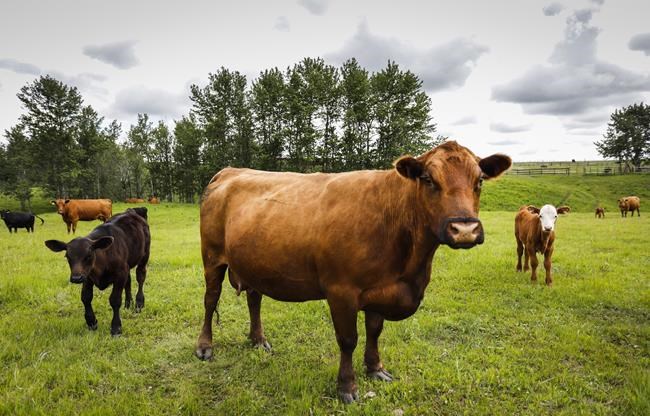Ducks Unlimited offering hay tenders to farmers
Advertisement
Read this article for free:
or
Already have an account? Log in here »
We need your support!
Local journalism needs your support!
As we navigate through unprecedented times, our journalists are working harder than ever to bring you the latest local updates to keep you safe and informed.
Now, more than ever, we need your support.
Starting at $15.99 plus taxes every four weeks you can access your Brandon Sun online and full access to all content as it appears on our website.
Subscribe Nowor call circulation directly at (204) 727-0527.
Your pledge helps to ensure we provide the news that matters most to your community!
To continue reading, please subscribe:
Add Brandon Sun access to your Free Press subscription for only an additional
$1 for the first 4 weeks*
*Your next subscription payment will increase by $1.00 and you will be charged $20.00 plus GST for four weeks. After four weeks, your payment will increase to $24.00 plus GST every four weeks.
Read unlimited articles for free today:
or
Already have an account? Log in here »
Hey there, time traveller!
This article was published 08/06/2022 (1245 days ago), so information in it may no longer be current.
To assist farmers reeling from years of drought, the Manitoba branch of Ducks Unlimited Canada is opening more land than usual under its jurisdiction to hay tenders.
The international conservation group will be taking bids on a combined 2,200 acres of land in 16 municipalities across southwestern Manitoba through its hay tender program.
The bids are to help cattle farmers who are still struggling to make up for drought and historic cattle feed shortages last year, said Cam Ross, grassland manager for Ducks Unlimited Canada (DUC) Manitoba.

Parcels range from 32 acres to more than 200 acres. Haying properties are available in: Cartwright-Roblin, Clanwilliam-Erickson, Coldwell, Glenella-Lansdowne, Hamiota, Harrison Park, Killarney-Turtle Mountain, Minto-Odanah, Oakview, Portage la Prairie, Prairie Lakes, Prairie View, Riding Mountain West, Sifton, Wallace-Woodworth and Yellowhead.
Every year, DUC Manitoba travels to its target areas in southwestern Manitoba to inspect and identify which properties will be hay fields, Ross said. The organization aims for a property to be a hayfield once every three years to maintain good crop rotation and biodiversity.
Recognizing that grasslands must be managed to remain productive, DUC Manitoba staff selected these acres because they would benefit from hay management in 2022.
“The best way to manage our land is to work with the farmers living and producing cattle from it,” Ross said. “We have multiple projects happening across the province, and this is a way for those producers to get some extra feed, even if it is to just get them through the winter.”
The organization has always worked with producers to manage wetlands and other green spaces to preserve habitat, Ross said.
Leaving lands unmanaged actually does more harm than good. It allows weeds to take over, as well as poplars to encroach, choking out the natural grasslands. Farmers understand their land and its cycles and must earn a living, so it’s in everyone’s best interest to see it managed carefully through grazing and crops rather than left to fallow.
DUC Manitoba has an ongoing hay tender program, but it is releasing more acres than usual due to the circumstances. On top of previous droughts, farmers must also contend with inflation and supply-chain disruptions, Ross said.
In 2020 and 2021, the organization released land to more than 100 producers to help them with ongoing drought and feed issues, he said.
There are two types of hay or grass stands DUC Manitoba grows on its managed lands. One is known as tame, such as alfalfa or orchard grass. There are also some properties that were seeded with native grasses in the 1990s, such as big bluestem and little bluestem, that also produce a good quality hay. The organization tries to establish multiple varieties of grasses across southwestern Manitoba so many people may have access to one or two fields in the area.
Farmers are not left alone to deal with the land, though. For example, this year there may be some issues with wet ground and flooding, Ross said. If producers are having trouble travelling from one part of a field to another due to a washout, DUC Manitoba staff can build a crossing.
The organization can also cut back on rental costs if a farmer is unable to access all the land.
There are, however, harvesting regulations in accordance with wildlife protection. Producers can begin cutting hay after July 15 to allow for nesting birds to move out.
Bids close June 29.
More information can be found online at ag.ducks.ca/program/hay-tenders-and-grazing/.
» kmckinley@brandonsun.com
» Twitter: @karenleighmcki1
